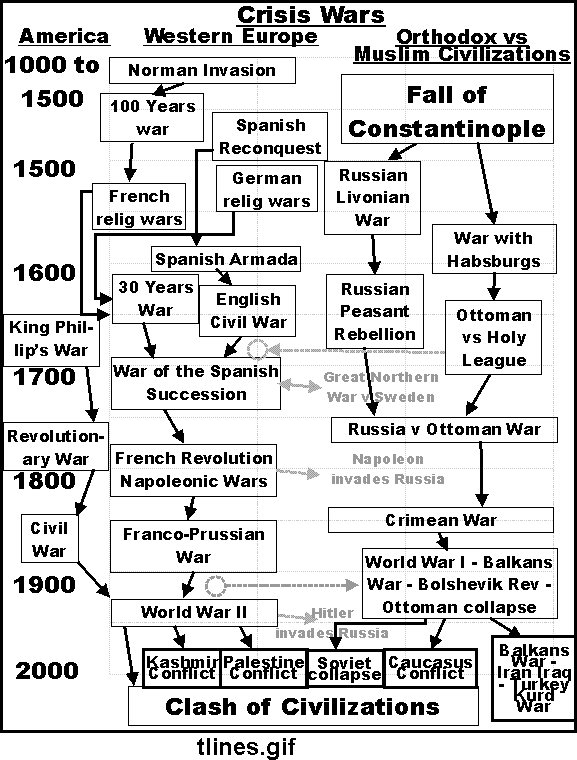Re: Financial topics
Posted: Sat Oct 29, 2011 12:50 pm
From Wikipedia:
I've studied these kinds of events pretty extensively and haven't mentioned this before, but the events in Europe around the years 1570-1572 are also of cyclical importance at this time and of similar nature to the anonymous, flash mobs and occupy movements.In May 1571, the 120,000-strong Crimean and Turkish army (80,000 Tatar, 33,000 irregular Turks and 7,000 janissary) led by the khan of Crimea Devlet I Giray, and Big and Small Nogai hordes and troops of Circassians, bypassed the Serpukhov defensive fortifications on the river Oka, crossed the river Ugra and rounded the flank of the 6,000-man Russian army. The sentry troops of Russians were crushed by the Crimeans. Not having forces to stop the invasion, the Russian army receded to Moscow. The rural Russian population also fled to the capital.
The Crimean army devastated unprotected towns and villages around Moscow, and then set fire to suburbs of the capital. Due to a strong wind, the fire quickly expanded. The townspeople, chased by a fire and refugees, rushed to northern gate of capital. At the gate and in the narrow streets, there was a crush, people "went in three lines went on heads one of another, and top pressed those who were under them". The army, having mixed up with refugees, lost order, and general prince Belsky died in a fire.
Within three hours, Moscow burnt out completely. In one more day, the Crimean army, sated with its pillage, left on the Ryazan road to the steppes. The Ottomans placed into slavery 150,000 Russians. Contemporaries counted up to 100,000 victims of the invasion in 1571. Papal ambassador Possevin testified of the devastation: he counted in 1580 no more than 30,000 inhabitants of Moscow, although in 1520 the Moscow population was about 100,000.
Russo-Crimean Wars
http://en.wikipedia.org/wiki/Russo-Crimean_Wars
